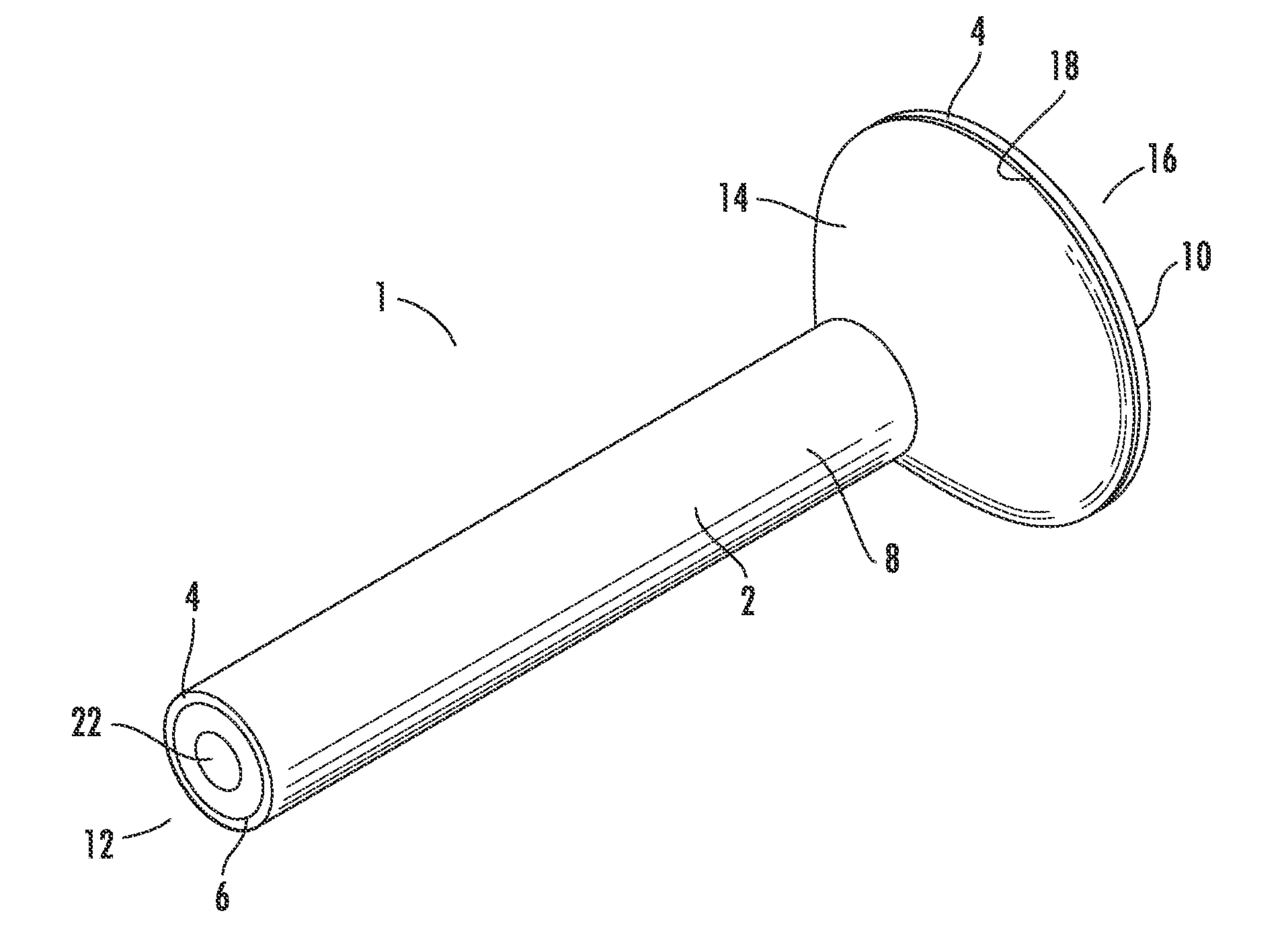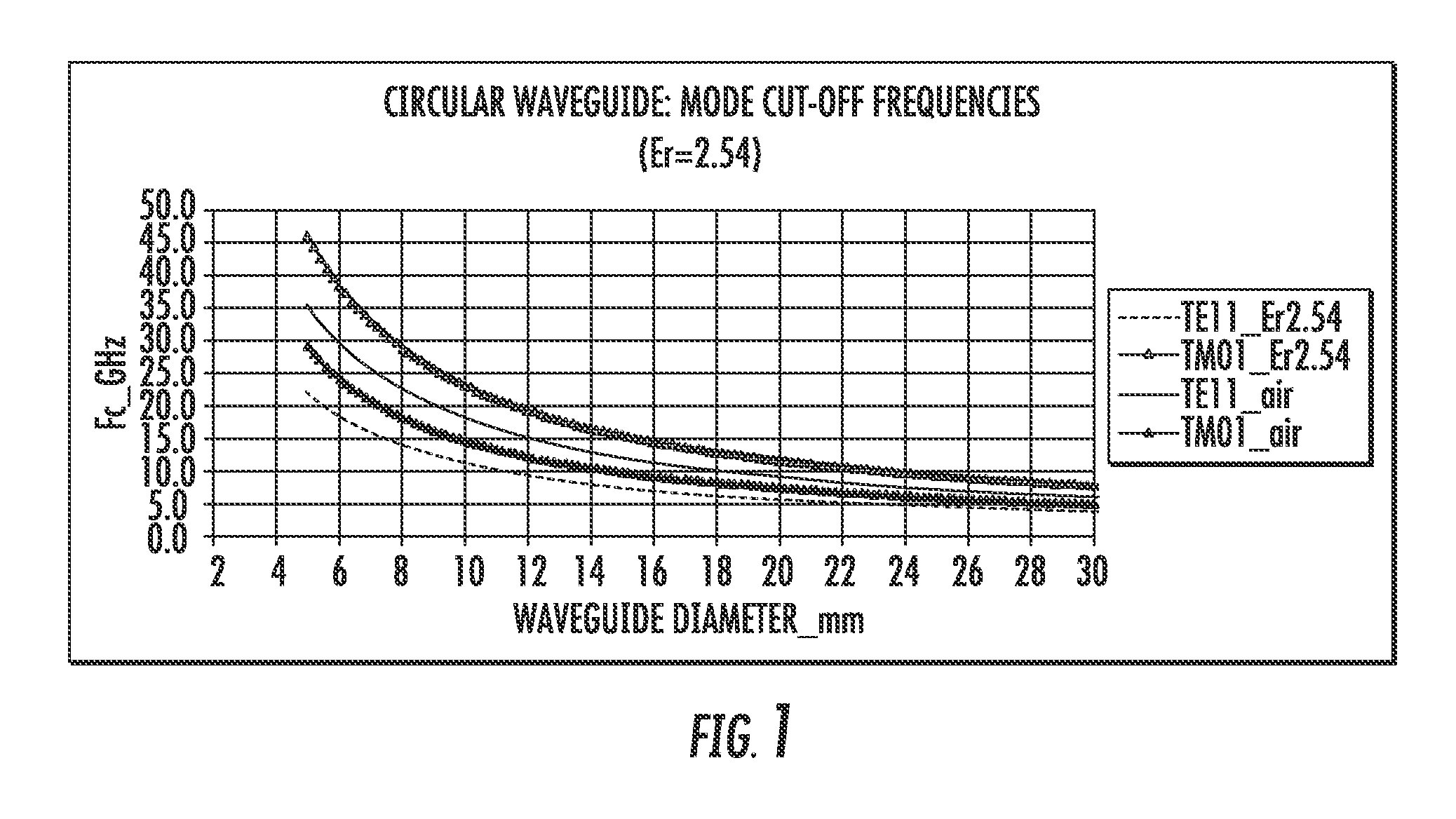Self-supporting unitary feed assembly
a unitary feed and assembly technology, applied in the direction of antenna details, antennas, electrical equipment, etc., can solve the problems of significant return loss sources, impedance discontinuities, and degrade electrical performan
- Summary
- Abstract
- Description
- Claims
- Application Information
AI Technical Summary
Benefits of technology
Problems solved by technology
Method used
Image
Examples
Embodiment Construction
[0026]A circular type waveguide may be selected as the feeder line of a feed assembly, to enable dual polarization operation. The energy inside the waveguide can travel in various TE and TM modes, which determines the orientations of electric and magnetic field vectors with respect to the direction of energy propagation.
[0027]The cut off frequency of each mode in a dielectric filled circular waveguide is determined by the internal diameter of the waveguide and the dielectric properties of the material. The amplitude and phase of energy, propagating in the waveguide, in a specific mode depends upon the waveguide dimensions, any discontinuity present in the waveguide and the frequency of operation. Because it has the lowest cut-off frequency, the fundamental mode in a circular waveguide is TE11. The next cut-off frequency in a circular waveguide is for TM01. The cut-off frequencies for the TE11 and TM01 mode of propagation in an air filled and dielectric filled (Er=2.54) open ended ci...
PUM
 Login to View More
Login to View More Abstract
Description
Claims
Application Information
 Login to View More
Login to View More - R&D
- Intellectual Property
- Life Sciences
- Materials
- Tech Scout
- Unparalleled Data Quality
- Higher Quality Content
- 60% Fewer Hallucinations
Browse by: Latest US Patents, China's latest patents, Technical Efficacy Thesaurus, Application Domain, Technology Topic, Popular Technical Reports.
© 2025 PatSnap. All rights reserved.Legal|Privacy policy|Modern Slavery Act Transparency Statement|Sitemap|About US| Contact US: help@patsnap.com



